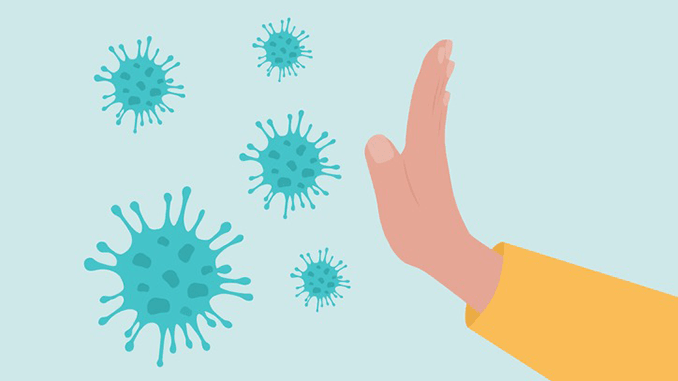
Following this CQC guidance will help to ensure you are effectively preventing and controlling the spread of infection and diseases in your practice
CREDIT: This is an edited version of an article that originally appeared on CQC
According to the CQC all providers of healthcare and adult social care should meet or exceed the Code of Practice on the prevention and control of infections and related guidance.
General requirements
- Providers should have an effective infection prevention and control (IPC) policy. This should be relevant to their practice, be accessible to all staff, regularly updated and include the contact details of the local IPC specialist team.
- The policy should also include specific requirements for higher-risk procedures – for example, the fitting of contraceptive devices and minor surgery.
- There should be an IPC lead with overall responsibility for IPC who should have the authority to lead and implement change where needed.
- There should be an IPC audit programme so that policies and procedures are shown to be effective and up-to-date. There should be evidence of issues identified by the audit and how they were addressed.
- The policy should describe staff training requirements and frequency of training updates.
- Cleaning contractors should have a schedule for general cleaning which should include responsibilities for cleaning specific clinical equipment and the cleaning frequency of specific areas, fixtures and fittings, including high-frequency touch items such as keyboards, telephones, door handles and light switches. It should be checked regularly for compliance and be in line with what the general public would expect in healthcare premises.
- Staff should have access to occupational health services and they should be immunised according to the Public Health England Green Book.
- The use of personal protective equipment (PPE), including staff training in the safe use and disposal of PPE, should be included in the policy.
Specific issues
Curtains and window blinds
Curtains around examination couches may be either disposable or reusable. There is no mandatory frequency for changing or laundering curtains, but the National Specifications for Cleanliness in the NHS suggests frequency. The CQC expects providers to assess the risk attached to each item, including curtains.
There should be a programme of cleaning for curtains and other window coverings in non-clinical areas, which should include regular vacuuming. The programme should specify when the curtains will be cleaned. Curtains should be changed immediately if visibly soiled or stained.
Carpets
Clinical rooms should not have carpets. There should be a policy for the frequency of cleaning carpets in consulting rooms and other communal areas which should include actions to take if carpets are contaminated with body fluids or spillages.
Healthcare waste
Primary care providers have a statutory duty of care which requires all that reasonable measures be taken to deal with waste appropriately from the point of production to final disposal. The healthcare technical memorandum Safe Management of Healthcare Waste is a framework for best practice and makes sure legislation, such as health and safety at wregulations, are met.
General clinical waste
Bins should be easily accessible to staff at the point of use; in clinical areas they should be lidded and operated with a foot pedal.
- Waste should be assessed and segregated appropriately.
- Waste bags should be:
- maximum two-thirds full and securely tied;
- labelled with the address and date before collection;
- stored in a secure, clean, designated area while awaiting collection.
Medicines waste
- Medicines waste should be stored in a designated bin and collected regularly by an appropriate waste contractor.
- Purple-topped bins, including sharps bins, must be available for the disposal of cytotoxic medicines (which include hormones).
- Staff should be aware of which medicines should be disposed of in which bin.
- Denaturing kits must be available for the disposal of controlled drugs. There should be a written procedure to govern this process and evidence that dispensary stock CDs are only disposed of in the presence of an authorised witness.
- Labels, prescriptions and other patient identification documents must be treated as confidential waste.
Sharps
Sharps should be assessed and disposed of in the correct container. Containers are orange, yellow or purple-lidded depending on the nature of the item and they should be labelled on assembly and on locking. They should not be filled above the black line, and they should be locked and disposed of after three months even if not full.
All staff should be assessed for risk of contracting blood-borne viruses, and should be offered vaccination as appropriate. The process for action following a sharps injury should be clear and accessible to all staff.
Hand hygiene
Adequate handwashing facilities must be available and easily accessible for all staff. This should allow washing hands in hot water using the correct technique; liquid soap, paper towels and alcohol gel should be available. Hand hygiene should be included in staff training and disposable gloves and other PPE should be available, and used as appropriate, with staff training being provided where necessary.
When they inspect
When the CQC inspect the management of infection prevention and control they assess against:
- Regulation 12 (Safe care and treatment)
- Regulation 15 (Premises and equipment) of the Health and Social Care Act 2008 (Regulated Activities) Regulations 2014
When assessing the cleanliness of premises, and the management of infection prevention and control, these regulations remind providers they must:
- assess the risk of, and prevent, detect and control the spread of, infections, including those that are healthcare-associated.
- ensure healthcare premises are clean, secure, suitable and used properly and that a provider maintains standards of hygiene appropriate to the purposes for which they are being used.
The CQC also uses key lines of enquiry, in particular, S1 Safeguarding and protection from abuse which assesses how providers:
- maintain standards of cleanliness and hygiene;
- have reliable systems in place to prevent and protect people from a healthcare-associated infection;
- maintain and use facilities and premises in a way to keep people safe;
- manage waste and clinical specimens to keep people safe.


Be the first to comment